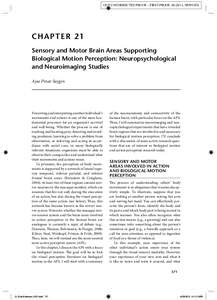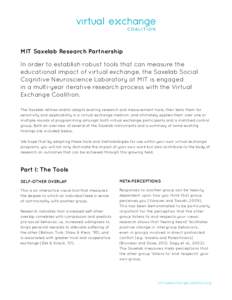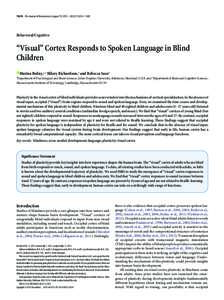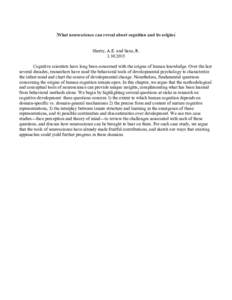<--- Back to Details
| First Page | Document Content | |
|---|---|---|
 Date: 2015-01-28 20:35:22Neuroscience Nervous system Brain Cerebrum Biological motion perception Inferior temporal gyrus Superior longitudinal fasciculus Mirror neuron Biological motion Premotor cortex Parietal lobe Visual system |
Add to Reading List |
 | MIT Saxelab Research Partnership In order to establish robust tools that can measure the educational impact of virtual exchange, the Saxelab Social Cognitive Neuroscience Laboratory at MIT is engaged in a multi-year iterDocID: 1xUyJ - View Document |
 | 11674 • The Journal of Neuroscience, August 19, 2015 • 35(33):11674 –Behavioral/Cognitive “Visual” Cortex Responds to Spoken Language in Blind ChildrenDocID: 1xUnf - View Document |
 | What neuroscience can reveal about cognition and its origins Skerry, A.E. and Saxe, RCognitive scientists have long been concerned with the origins of human knowledge. Over the last several decades, researcheDocID: 1xT6i - View Document |
PDF DocumentDocID: 1xS2j - View Document | |
PDF DocumentDocID: 1xN0A - View Document |
 OUP UNCORRECTED PROOF – FIRST-PROOF, , NEWGEN CHAP TER 21 Sensory and Motor Brain Areas Supporting Biological Motion Perception: Neuropsychological and Neuroimaging Studies
OUP UNCORRECTED PROOF – FIRST-PROOF, , NEWGEN CHAP TER 21 Sensory and Motor Brain Areas Supporting Biological Motion Perception: Neuropsychological and Neuroimaging Studies